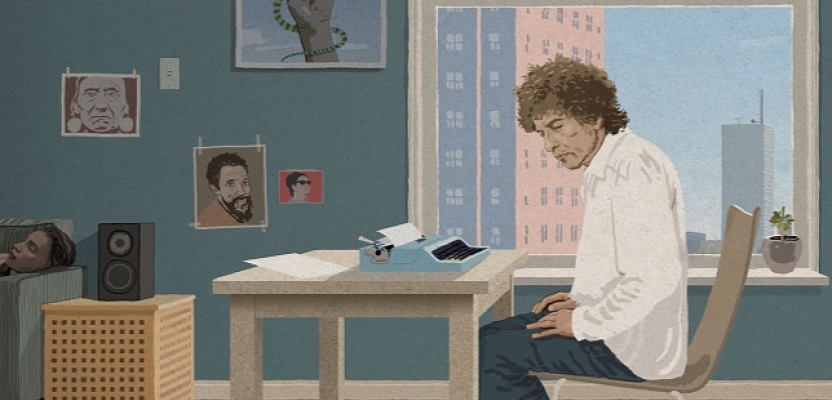You may have heard some horror stories from around the industry about bad client-freelancer relationships and how disastrous they were for both parties. Clients paying late or not paying at all, sending back work which they’d previously signed off on, requesting last-minute changes… There’s all kinds of stories about bad clients, from all over the freelance world.
Except some of these remain just that: horror stories, extremes, sometimes hyperboles from one extremely hurt side looking to be granted some poetic justice. If you’ve been in the industry for long enough, you’ll know: nothing is ever either black or white, and the worst clients often wander about in shades of grey.
How to recognise a bad client
A client does not have to be abusive or unreasonable for them to be bad for your business. But just how do you recognise a bad client? What are some red flags which should get you thinking about dropping the project soon, if not instantly? How to deal with those grey areas, indeed?
Here are 5 absolute red flags you should watch out for when you’re looking for your next freelance project. If you’ve already identified some and are looking to turn down your client, make sure to check out our piece on how to gracefully turn down a freelance project!

Image credit: Christopher Doyle
Unrealistic timelines/deadlines
Some clients will have very little to no sense of whatever timeline is needed to see a job to completion. The old stereotype of the client being a walking wallet (with no idea of what’s at stake) works well here. Not all clients will be like this of course, but some will be simply approaching you with a budget, a project, and the pretence to have it done quickly and flawlessly.
This is mostly common in clients who have not worked with a designer or any freelancer before, or in those who haven’t worked on a similar project yet. If you’re an established freelancer, perhaps they’re not the right fit for you. But if you really want to try and work with them, you could attempt to explain what is a reasonable timeline to you, and be prepared to justify why. It’s entirely up to you if it’s worth the effort – but sometimes the client genuinely does not know! And they don’t know how to tell you they’re new to this, either. Would you jeopardise a potential successful business partnership due to sheer ignorance?
Pressure for discounts or tight budget
The right client for any project will have a clear idea of the budget needed to complete the work, they will understand your value and they will not pressure you for any kind of discount. If the budget proposed is lower than your average rates, you should probably look elsewhere for something that better suits your needs.
That said, not all budgets are non-negotiable, and if your guts say this would be a genuinely interesting project to devote your time to, perhaps you should try to find some middle ground with your prospective client. However, such talks and negotiations should be initiated by you, with no pressure from the other side. If the client seems to be too interested in saving money, then perhaps they’ll be willing to compromise on quality. Hence, this project would probably best suit someone else.
Micro-management and excessive control
We know clients. They have ideas, they have opinions – rightly so, too. It’s their money after all, it’s quite natural for them to be concerned about how best to spend it. However, you have to keep in mind that they are entrusting you with that money to deliver some work to the best of your capabilities and expertise. You are the professional selling your services. You should be in control – to a reasonable extent.
However, some clients will be driven to constantly watch over your shoulder. They will try to reach you at any time of day, second-guessing your decision and trying to provide their inputs on anything and everything you do. If your client seems a control freak from the start, it’s a massive red flag that things won’t go as you plan. Your client may want to jump in at every step, and they simply won’t let you do your job in peace. You could try to reason with them – but be mindful that it won’t be easy. If that’s the case, your only choice may be to simply turn down the project altogether. The best client is the one that largely leaves you alone – unless it’s strictly necessary of course.

Image credit: Dennis Otieno
Extreme indecisiveness
Good clients will know what they want and will have at least a clear idea of what the final goal should be. Your job is to deliver on that dream and brief, crafting some creative work at the best of your capabilities. You will have spent some time to clearly define the deliverables and goals of the project, so it is now up to you to see the project through to completion.
Some clients will keep changing the scope of the project on the go, coming up with new, impractical ideas all throughout that will make your life and work immensely difficult. You have two choices, if that happens: either you try to factor in those choices in your final invoice, clearly accounting for all the changes and changing your rates accordingly, or you walk away. Either is a valuable option, and the choice largely depends on the current circumstances. Is it unbearable to keep working with this client, or is it something that you could finish with some extra time and budget? Up to you to decide.
Unprofessional communication
Everyone has different communication skills, and especially if your client is international, you shouldn’t expect them to be masters of the literary form. But you must expect a professional relationship and nature of communications. Is the brief unclear and badly written? Was it not proofread thoroughly enough? Is your client being too informal, or way too uncomfortably formal? Some of these issues can be resolved with a quick chat – but if the level of communication isn’t to a professional standard, you can’t expect things to go smoothly all the time.
Are they calling you or leaving you emails in the middle of the night? Are they shouting, talking over you all the time, being generally abusive (in the worst cases)? Are they Don’t think twice. As harsh as it sounds, a client who doesn’t understand professionalism isn’t ready to hire an established freelancer. Move on.
How to end a toxic client relationship
One of these red flags is usually enough to consider ending a business relationship which teeters on uneven ground, but if you recognise two or more in your next client, you may have to gracefully turn down their project and redirect them somewhere else. If you’re unsure about how to do that, make sure to check out our 3 simple ways to politely reject a client project.
Do you know of other red flags that may put a business relationship in danger, or jeopardise a freelance project? Let us know in the comments below!







Victor Minguez December 3rd, 2021, at noon
mmm... there are too many flags out there... we should refuse 75% of the projects... I feel that clients are less and less experienced every year, the professionals with large experience are too expensive, so they get early retirement, and companies hire young people with no experience, with a backpack full of flags... Cheap, fast, those two flags are common to most of young people because this is how they experience the world on the social medias...